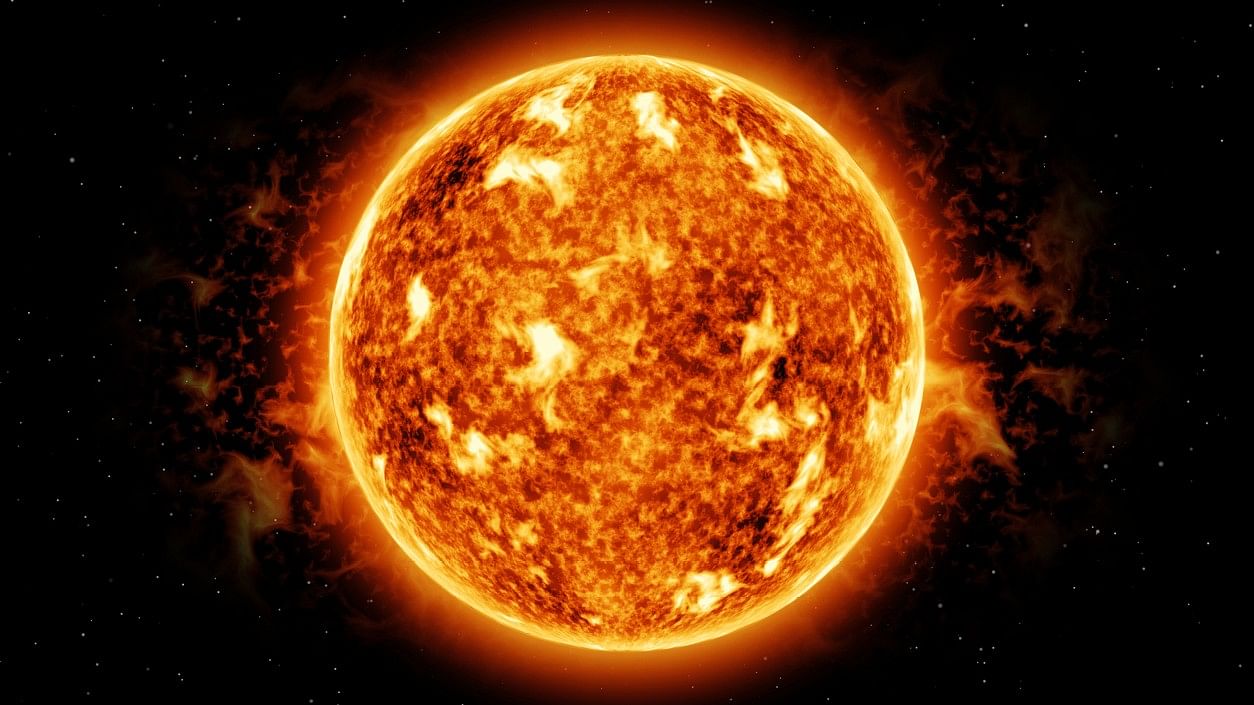
Representative image showing the Sun in space.
Credit: iStock Photo
Bengaluru: Astronomers at the Indian Institute of Astrophysics (IIA) in Bengaluru have developed a new approach to predict the strength of an upcoming solar cycle maximum, the period of highest activity in the sun’s roughly 11-year periodic cycle.
Using 100 years of data from the IIA-run Kodaikanal Solar Observatory, they established a correlation between the width of super-granular cells on the solar surface during the minimum year of the solar cycle and the number of sunspots seen during the subsequent solar cycle maximum. Findings from their recent study are billed to help in forecasting space weather.
A solar cycle is marked by minimal activity that builds up to a period of maximum activity, followed by a drop back to the minimum. These changes are measured in terms of the number of sunspots observed on the solar surface.
Solar events like geomagnetic storms can disrupt communication networks and power grids, and damage spacecraft electronics. The intensity of the activities over 11 years also varies from cycle to cycle, impacting space weather and the earth’s atmosphere. This makes predicting the amplitude of the solar cycle critical.
Nine cycles studied
Images of the chromosphere – the second of the sun’s three atmospheric layers – were observed using the telescope at the 125-year-old observatory. The researchers studied data from more than nine solar cycles to detect large-sized (30,000 km) convective patterns, or super-granulations, on the sun’s visible surface. These patterns have around 5,000-km thick borders, called super-granular lanes; their thickness varies over the solar cycle.
“We found that the super-granular lane widths obtained near the mid-latitudes during the period of sunspot cycle minima are strongly correlated to the amplitude of the following sunspot cycle,” Prof K P Raju, from IIA, the lead author of the study, published in The Astrophysical Journal Letters, said.
Prof B Ravindra, Prof Jagdev Singh, and Prof Muthu Priyal are co-authors of the paper.
The correlation of the two parameters can facilitate a simple method to predict the strength of the next sunspot cycle by about 4–5 years in advance.